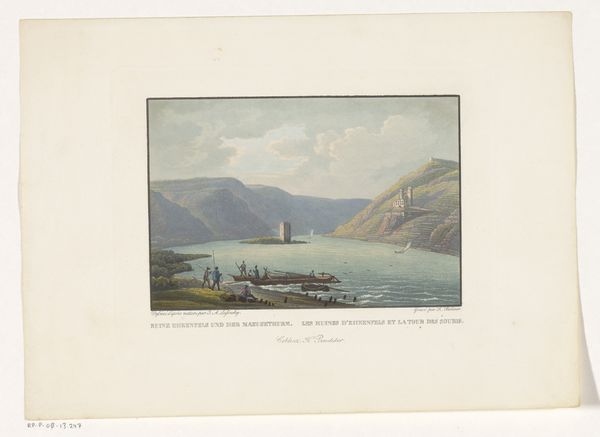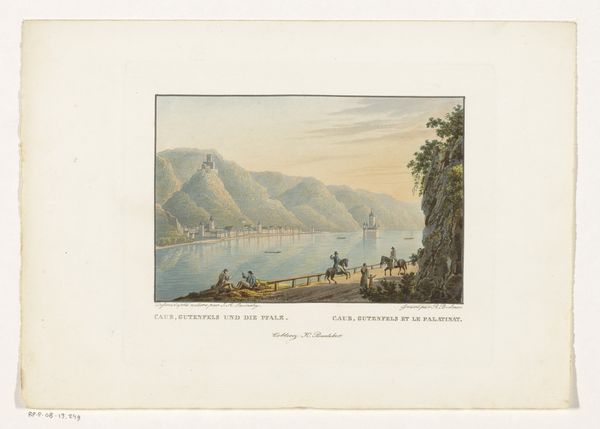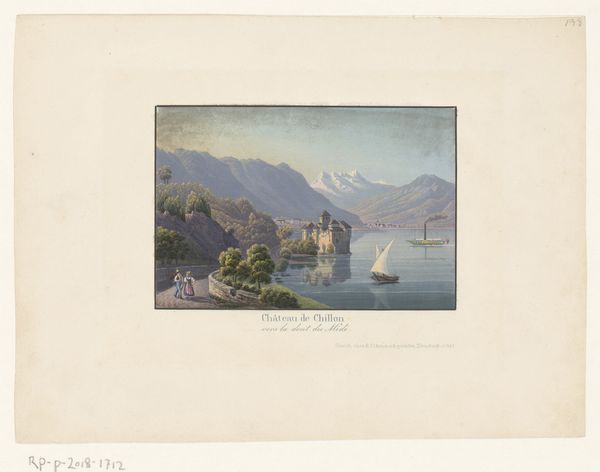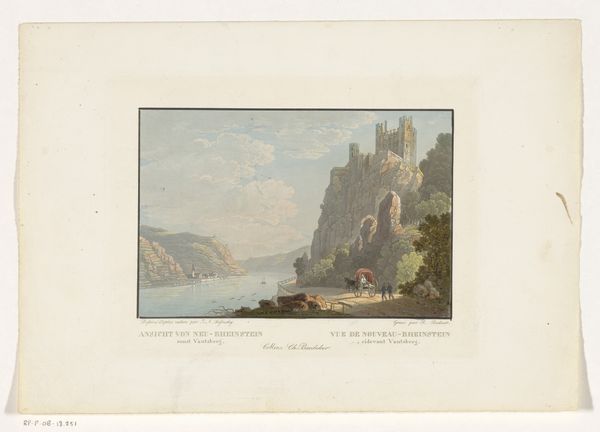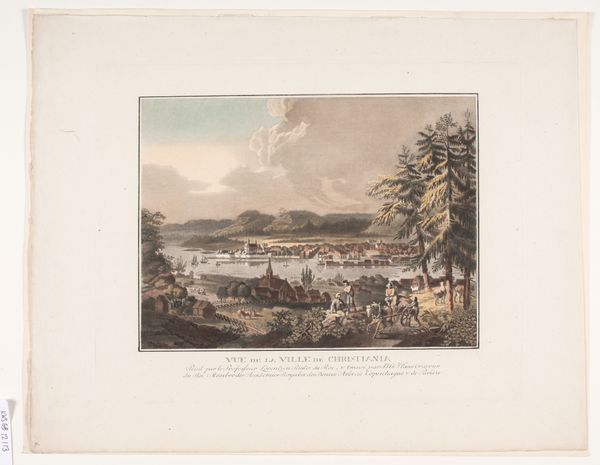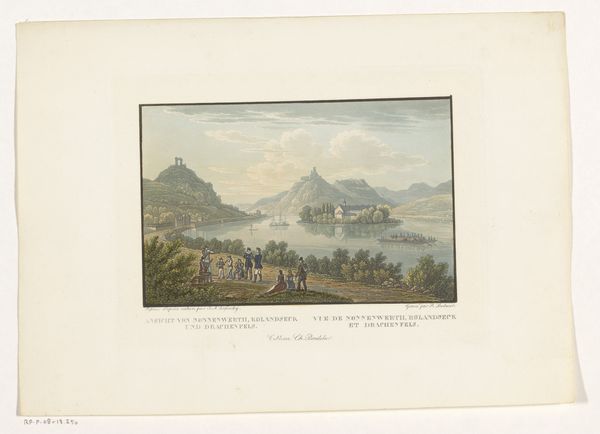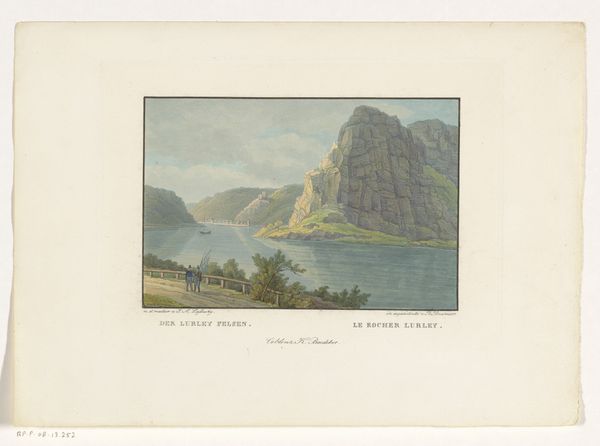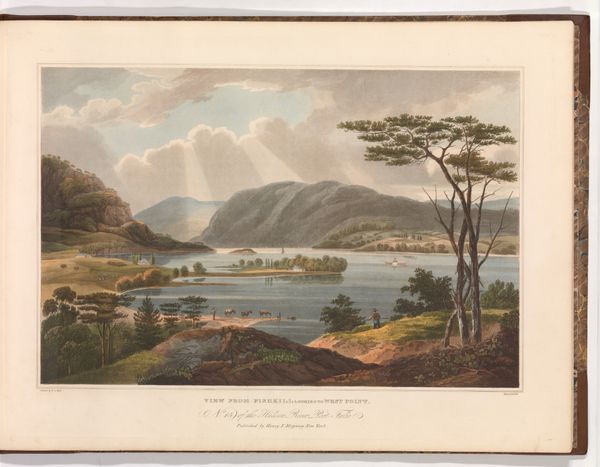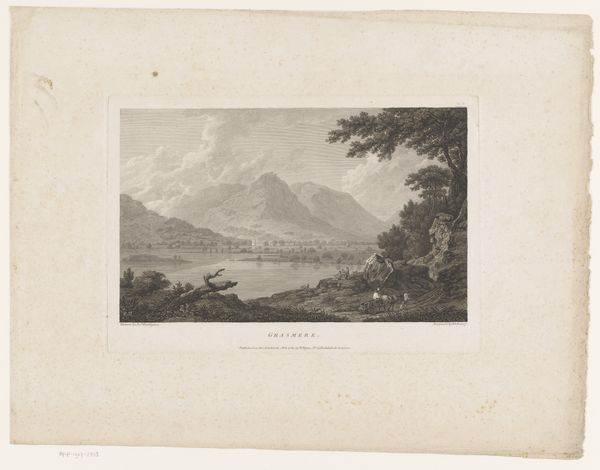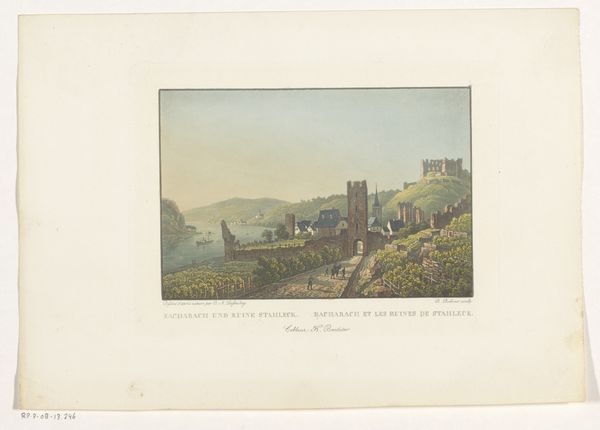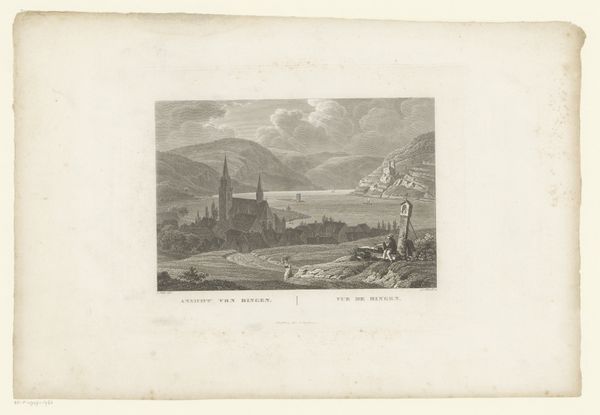
Dimensions: height 134 mm, width 162 mm
Copyright: Rijks Museum: Open Domain
Editor: Here we have Rudolf Bodmer’s "Gezicht op Oberwesel," a watercolor drawing made sometime between 1832 and 1872. The soft, muted colors create a very serene mood. What strikes you when you look at this piece? Curator: I see a detailed representation, but also a romanticized vision, likely intended for consumption by a particular class. Consider the paper itself: where was it sourced? What was the process of manufacturing watercolors during this period, and who was involved in that labor? These factors influenced the final product just as much as Bodmer's individual skill. Editor: So, you're suggesting the materials themselves have a story to tell about class and labor? Curator: Exactly. Look at the detail given to the architecture versus the landscape. Does this not represent a society focused on owning and controlling the means of production? The materials, from the pigments to the paper, become imbued with this social narrative. Think about the availability of such landscapes as commodities to a growing bourgeoisie class eager to display their cultured taste. Editor: That's interesting. I hadn’t considered the commodification aspect so directly. I was just admiring the pretty river scene. Curator: And that’s a valid reaction, but thinking about who this landscape was *for*, and how its production relates to broader social structures gives us deeper insight into the values and ideologies that shaped 19th-century art. How readily available would this image have been to local people of modest means? Editor: Right, that definitely reframes the way I see the piece. Thanks! Curator: My pleasure. It's about questioning what we see and uncovering the often-hidden connections to the material world around it.
Comments
No comments
Be the first to comment and join the conversation on the ultimate creative platform.
